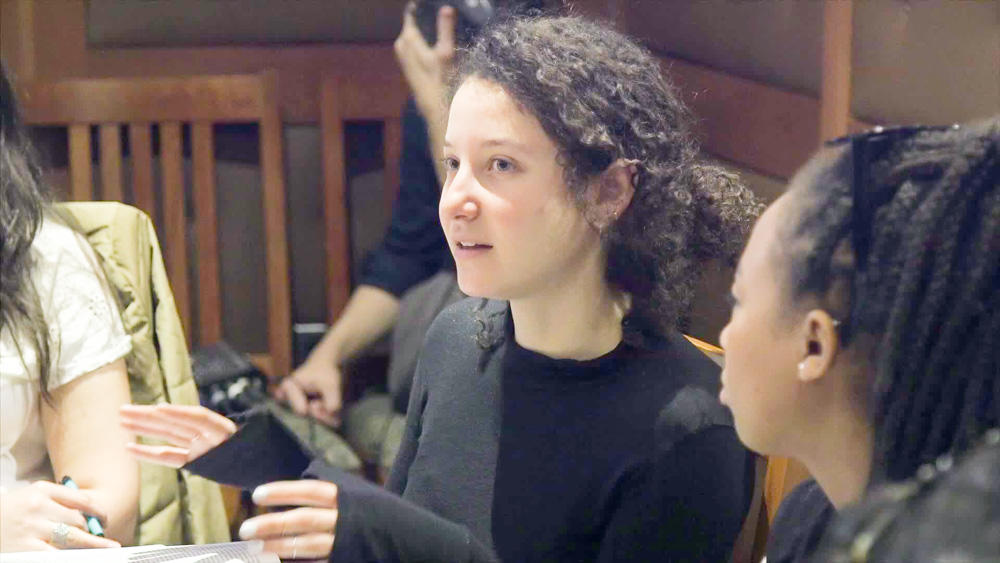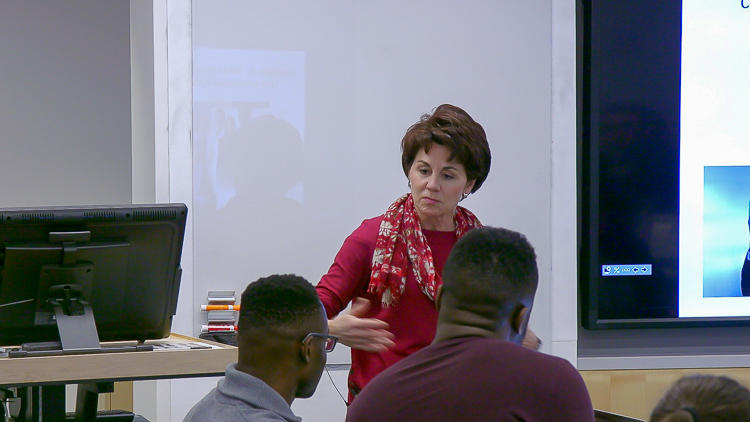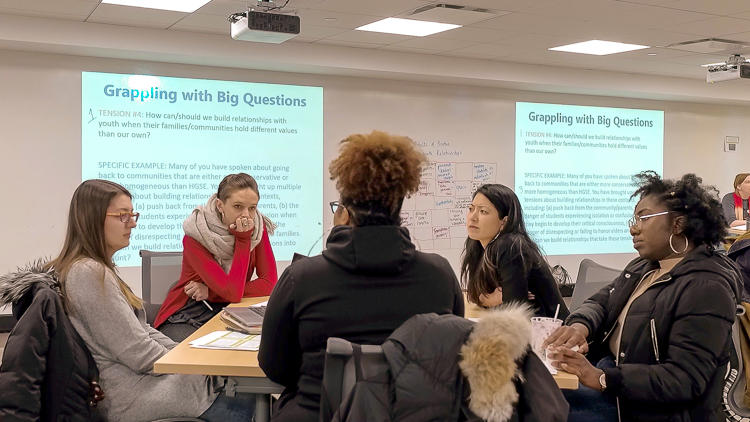An instructor’s personal or political opinions might be less relevant when it comes to some topics, but asserting your opinions on certain controversial issues may be crucial. In this video, Christina “V” Villarreal and Tim McCarthy reflect on when and why they choose to assert certain political positions or strongly held beliefs in a discussion, particularly when “a line is crossed” or when “stakes are high.”
Asserting political opinions in discussion
Instructor
Christina “V” Villarreal, Lecturer on Education
Student Group
Graduate
School
Harvard Graduate School of Education
Course
Ethnic Studies and Education
Group Size
23 students
Instructor
Timothy Patrick McCarthy, Lecturer on History and Literature
Student Group
Undergraduate/Graduate
School
Harvard College
Course
Stories of Slavery & Freedom
Group Size
16 students
- Clarifying for yourself why you teach the way you do and what you hope to accomplish with your scholarship may help you make decisions about when to insert your own opinions in class. Consider crafting your own personal teaching philosophy to do this.
- Once you’ve clarified your approach in your own head, be explicit with your students about how you see yourself connected to the content you teach and share your teaching philosophy with them. This will help put your comments in context.
- Model civil behavior and maintain consistent classroom norms. Students will notice the ways you demonstrate respect even when you disagree with their comments or when a conversation gets controversial.
- A study conducted to establish the role of instructor self-disclosure found that when instructors shared either personal or professional information, students reported that instructor self-disclosure helped instructors establish credibility. Content of instructor self-disclosure, however, had to be relevant to either students or the course content (Myers et al., 2009).
- Researchers reported that instructor self-disclosure can enhance student learning as it is is associated with out-of-class communication and increased student interest in the course (Cayanus & Martin, 2004)
- A blog post from the Yale Center for Teaching and Learning provides strategies for “Teaching Controversial Topics”
- The Center for Research on Learning and Teaching at the University of Michigan has developed guidelines for “Discussion-Based Teaching and Handling Controversial Topics in the Classroom”
- University of Michigan's Center for Research on Learning and Teaching offers tips and examples of “Teaching Philosophies and Statements”, which is a chance for you to clarify and articulate your approach to asserting political opinions (or not)




